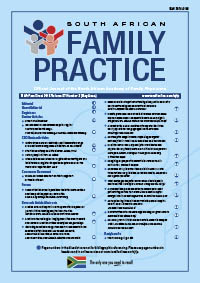Delayed onset muscle soreness: No pain, no gain? The truth behind this adage
Keywords:
delayed onset muscle soreness, mechanism, symptoms, treatment, athletes, management
Abstract
The purpose of this article is to provide brief insight into delayed onset muscle soreness (DOMS), a phenomenon that is often experienced by recreational and elite athletes. The negative implications of DOMS include pain, decreased motivation to continue training, and decreased performance. While performance issues may be more relevant to the elite athlete, pain and decreased motivation are particularly relevant to recreational athletes wishing to sustain a regular level of physical activity. The article is aimed at general practitioners (GPs) who may encounter athletes presenting with DOMS, and who will benefit from understanding the proposed mechanisms, signs and symptoms of the condition. Numerous researchers have hypothesised that certain interventions may prevent or minimise the symptoms thereof, and all GPs could benefit from understanding the available options for athletes, and the scientific evidence that supports these options.
Published
2015-02-16
Section
Review Articles
By submitting manuscripts to SAFP, authors of original articles are assigning copyright to the South African Academy of Family Physicians. Copyright of review articles are assigned to the Publisher, Medpharm Publications (Pty) Ltd, unless otherwise specified. Authors may use their own work after publication without written permission, provided they acknowledge the original source. Individuals and academic institutions may freely copy and distribute articles published in SAFP for educational and research purposes without obtaining permission.

